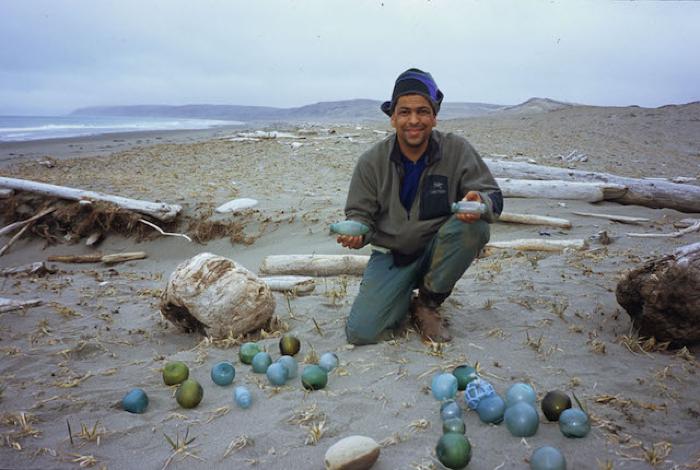Beachcomb — Qutirluni

Kodiak’s windy shores provide a wealth of resources, from blue mussels and bull kelp to birds’ eggs. However, not all of the valuable items found on the beach are from the archipelago. Islanders have a long history of beachcombing, collecting everything from driftwood and pumice, to amber, shipwreck iron, and more recently glass fishing floats. The Alutiiq word qutirluni means both to walk along the beach and to walk all over the beach—to beachcomb.
Beach combing is ancient. Kodiak archaeologists find stone tools in sites where they are dramatically out of place. Sometimes these tools are thousands of years older than the site being studied. A 6,000-year-old spear point appears in a 500-year-old site. Often the pieces are waterworn, suggesting that they were tumbled in the waves and collected from the beach. Other times, the tools represent a totally different culture. At a Russian site on Afognak Bay, amid the glass beads and fragments of china plates, were a few chipped stone tools probably made by people living on the Alaska Peninsula 3,000 years ago! Russian traders appear to have picked up the stone tools and carried them to Kodiak, perhaps to use as flints for their flintlock rifles.
In the eighteenth century, Russian colonists recorded some of the unusual items that washed up on Kodiak’s shores—a trunk of blue cloth, a ship’s candle, a straw hat, and even the side of a wooden ship. These finds suggest that odd things from Pacific Rim peoples likely appeared on Kodiak’s beaches in the distant past, well before explorers arrived. For example, Asian shipwrecks may have been an early source of forged iron.
